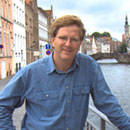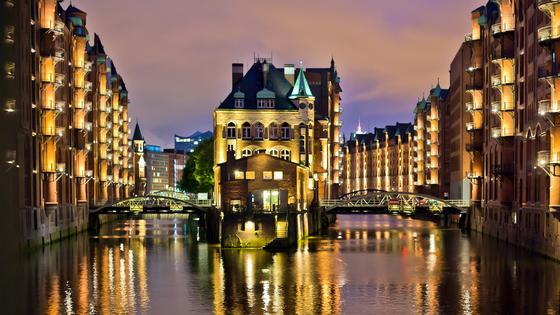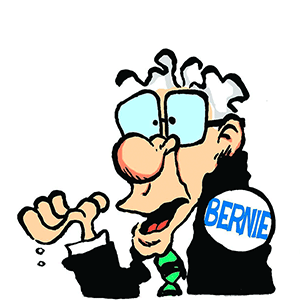Rick Steves’ Europe: Hamburg is Germany’s alluring second city
Hamburg is Germany’s second-largest city and its most important port. Like other great European “second cities” – such as Marseille, Glasgow, and Antwerp – this northern port city has a special pride. Popular with Germans (but a rare stop for Americans), Hamburg feels real and has an edgy charm. Visiting, you sense it knows where it came from and where it’s going.
Travelers looking for quaint, Old World Europe won't find it in Hamburg. The city's medieval center was virtually leveled by a huge fire in 1842, and World War II bombing decimated the rest. Today's city center is a soulless mixture of office buildings and brand-name chain shops.
Instead, Hamburg's allure is around the edges, showcasing reminders of Germany’s industrial prosperity. A century ago, Hamburg's port was the world's third largest, and between 1850 and 1930, more than five million Germans emigrated to the US from here. These days, the city's fishy maritime atmosphere – with a constant breeze and the evocative cry of seagulls – gives Hamburg an almost Scandinavian feel that's worlds away from the sun-drenched, Baroque joviality of Bavaria.
One city-center sight that’s worth visiting is the magnificent 600-room City Hall. After the previous City Hall burned down in the fire, the city constructed the current building to highlight the wealth and grandeur of turn-of-the-20th-century imperial Germany. It shows off Neo-Renaissance, Neo-Gothic, and other Historicist styles popular around the year 1900.
From City Hall, a short walk north leads to Binnenalster, the smaller of Hamburg’s two delightful lakes. Lining the lake is the Jungfernstieg, the city’s most elegant promenade boasting top-of-the-line shops. Year-round, canal boats take visitors on a sleepy one-hour tour around the lake.
Just above Binnenalster is the larger lake, Aussenalster. In the past, private gardens tumbled down from mansions lining the lake. But a 1953 law guaranteed public lake access for everyone, and walking and biking paths now parallel its shore, providing Hamburg – one of Germany’s greenest cities – with a sprawling parkland.
Cradling the city to the south is another body of water: the Elbe River, site of the city's former docklands. With the advent of modern container ships that required more space than Hamburg’s industrial zone could accommodate, most shipping business shifted to a larger port nearby – and all this prime real estate (just a half-mile from City Hall) suddenly became available. Now this area – like the former docklands areas in London, Barcelona, and Oslo – is being gentrified. The result: HafenCity, long Europe’s biggest urban development project. When it’s done, downtown Hamburg will be 40 percent bigger.
The centerpiece of HafenCity is the Elbphilharmonie Concert Hall, a towering and wildly beautiful piece of architecture. Inaugurated in 2017, it’s a combination concert hall, hotel, and apartment complex that welcomes visitors to ride its escalator to a spectacular city and Elbe River view.
The northern part of HafenCity is occupied by Speicherstadt, the old warehouse district. The city preserved the area's massive red-brick riverside warehouses as part of the urban landscape, and some of them now house museums, including the International Maritime Museum and Miniatur Wunderland—one of Germany’s most visited attractions featuring a sprawling model railway and miniature versions of the Alps, Scandinavia, Italy, and the US.
Downriver from HafenCity is the St. Pauli Landungsbrücken harborfront area, which locals call “the Balcony of Hamburg.” One of my favorite sightseeing experiences in Hamburg is to hop a harbor cruise and gape at the mighty port. The massive ships, container cranes, and dry and wet docks are breathtaking.
An interesting place to cap your day is the Reeperbahn, named after the rope makers who once labored here to supply Hamburg’s shipping industry. Home to many of Hamburg’s Broadway-style musical theaters and strip clubs, this neighborhood is where the Beatles got their start.
The Reeperbahn also contains the tawdry red-light sailors’ quarter. But thanks to a rising tide of affluence, the red-light district is shrinking, and these days, it's confined to one small lane, defined by metal modesty walls erected during Hitler’s rule. Back then, German society didn’t admit to having prostitutes, but an exception was made for lonely sailors on shore leave.
After being surrounded by the seediness of the Reeperbahn, the nearby Shoulderblade district provides a wonderful breath of fresh cultural air. This trendy neighborhood hosts a squatter-building-turned-arts-venue and a strip with so many cafés it’s nicknamed “Latte Macchiato Boulevard.” An edgy-yet-charming park has one of the few reminders I saw of World War II in Hamburg – a bunker that’s now a climbing wall covered with street art.
Districts like the Shoulderblade and HafenCity show off modern-day Hamburg at its finest. No longer content to be famous merely for its lusty sailors' quarter and as the Beatles' springboard to stardom, the new Hamburg is evolving into a cultural capital moving boldly into a promising future.
========
(Rick Steves (www.ricksteves.com) writes European guidebooks, hosts travel shows on public TV and radio, and organizes European tours. This column revisits some of Rick's favorite places over the past two decades. You can email Rick at rick@ricksteves.com and follow his blog on Facebook.)
©2025 Rick Steves. Distributed by Tribune Content Agency, LLC.
(c)2025 RICK STEVES DISTRIBUTED BY TRIBUNE MEDIA SERVICES, INC.














Comments